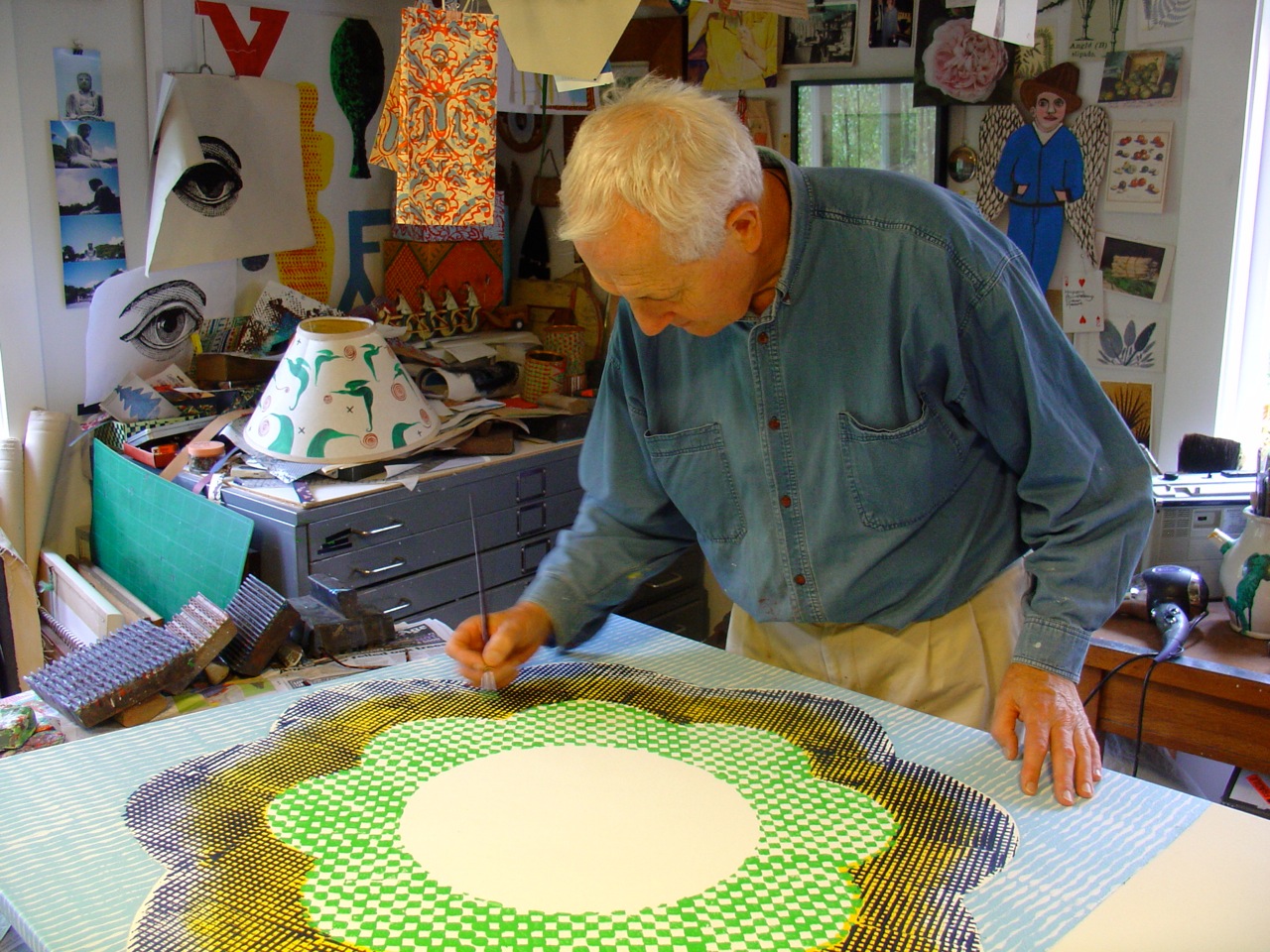
2016 Artist Gavin Chilcott
“The painting I am working on for the auction is part of a new series called ‘paintings for grown-ups – a meditation aid’. The image is of a stylized lotus flower hovering over a pool. Family experience has shown me the value of the hospice movement in the last months of life. This is an invaluable service.”
Gavin Chilcott – March 2016
Words like ‘charm’, ‘elegance’ and ‘wit’ tend to sit uneasily in some art company since they suggest that the room has been infiltrated by frivolous sensibilities.
Rather as if the Rococo François Boucher had opened his mouth in a room full of dour olive-green-landscape painters and said, “trop verte et mal éclairée” (too green and badly lit).
Boucher also liked to make stage designs and costumes, as well as designs for tapestries and chinaware; Chilcott designs furniture, carpets and ceramics. It’s true that Madame de Pompadour’s dress in Boucher’s famous portrait of 1756 is a grand floral landscape all by itself, just as it’s true that his stage-managed exteriors (Diana Leaving the Bath 1742) are really interiors—but that’s also where an underlying seriousness appears.
In Boucher’s world, as in Gavin Chilcott’s, the outside and the inside flow, in and out of each other, across an imaginative switcher that redirects the sensuous delights of the natural world into the designed spaces where people live. A sense of abundance and excess is generated; and the organised, well designed pleasures of the artifactual and architectural world into the natural one, where they produce a sense of calm and reflection. There’s also, of course, a cross-transfer and mash-up of an interior mental world and an exterior physical one: a place of surrealist play and occasional unease. This transfer is a serious and indeed responsible business: at heart Chilcott’s work is about respect for those phenomena that give us pleasure.
Time and again his deployments of materials (paper bags anyone?), colours (a garden designed around seasonal colour fields) and narratives (the humour and pathos of the ‘autoportrait’ series in the late 1980s) disclose a mandala-like diagram of consciousness mapping the precious connections between pleasure, knowledge and care, presided over by a marvelous sense of humour.
Ian Wedde
29 March 2016








